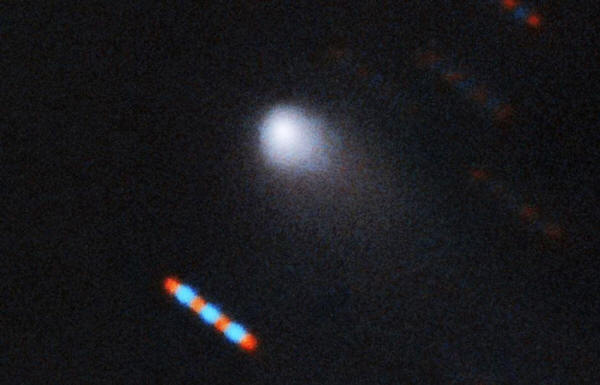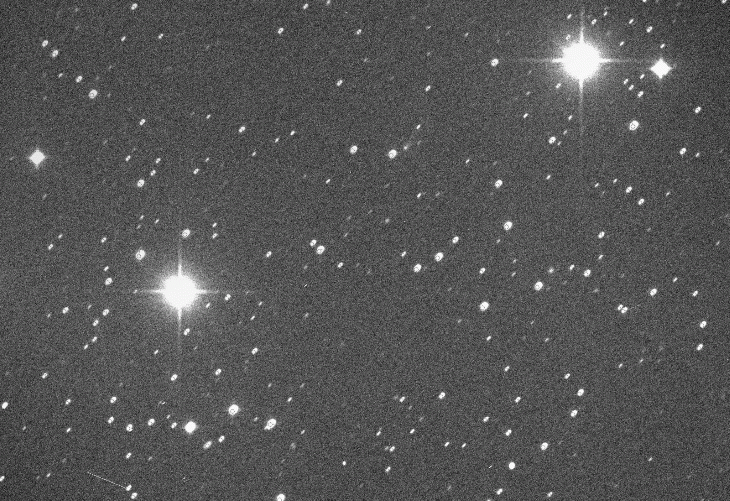|
October 15, 2019
Ideas ranged from an alien light sail to a fossilized comet...
Now another interstellar visitor has arrived:
And it's definitely a comet.
This Oct. 11th
video recorded by amateur astronomer Michael Jäger of
Weißenkirchen, Austria, clearly shows Borisov's tadpole-like tail:
What's the tail made of?
To answer that question, in September an international team of astronomers led by Alan Fitzsimmons took a closer look using the 4.2 m William Herschel Telescope (WHT) on La Palma.
They've just reported
the results.
obtained at the William Herschel Telescope.
The comet's nucleus is pumping out approximately 4x1024 CN molecules every second.
That may sound extraordinary, but it is not. Here in the Solar System, cyanide is commonly found in comet tails, and the production rate in Borisov is similar to that of local comets.
Combining the production rate of CN with other factors, such as the comet's brightness and apparent dustiness, the researchers calculate that 2I/Borisov's core is between 0.7 km to 3.3 km wide - again, typical of ordinary comets.
In other words,
wherever Comet Borisov came from,
it must be a lot like
here.
|




